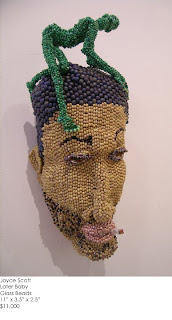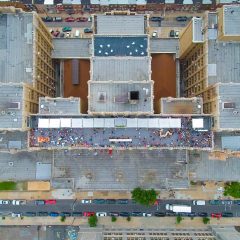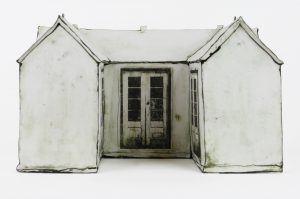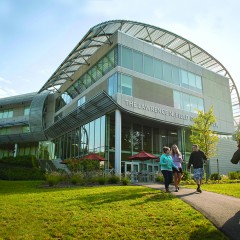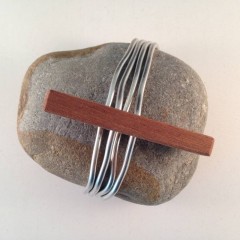
Design Philadelphia’s Urban Visions
There’s a lot to see at the moment. Firstly, Design Philadelphia has events all over the place. Don’t miss the group of eco-friendly, affordable and occasionally pre-fab projects for improving urban living that are set up on a vacant lot opposite the Kimmel Center with work by an international group of designers. A Clean Break (also covered by Libby, below), organized by Minima Gallery (up through Oct. 30th) features projects that are realistic and/or in actual use, such as a hydroponic vertical garden on the side of a shipping container; the unit will be moved to Greensgrow’s urban farm in Kensington where it will function as an office. The modular housing on display has actually been built elsewhere and takes account of all the constraints of affordable urban infill housing. This was a joy after seeing MoMA’s recent exhibition on modular housing which reflected architects’ tendencies towards the utopian.
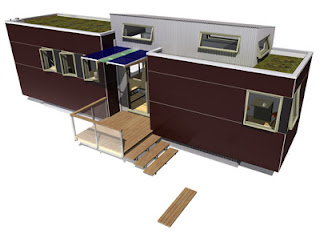
Sustain Design/Altius Architecture, MiniHome, billed as an urban rv, is designed for short-term living but is suitable to various uses and aesthetically pleasing to the design-conscious. I’d be happy to holiday in one.
Pentagon Memorial Designers Now call Philadelphia Home
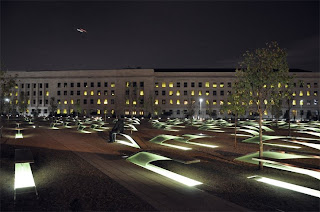
KBAS Pentagon Memorial at night when the benches, which cantileever above water are lighted.
Another project on Design Philadelphia’s list was the open studio of KBAS (Kaseman Bekman Advanced Strategies), a live/work space in Old City which I visited Thursday evening. Kieth Kaseman and Julie Bekman moved their practice to Philadelphia after their Pentagon Memorial was well underway. Julie told me that their proposal was chosen from a field of 1200 international entries for the memorial to Washington’s victims of Sept. 11th; she and Kieth were fresh out of graduate school at the time, living in New York. Julie said this was a way to give something back. The two-acre memorial was dedicated last month on Sept.11th., and rather than designing a monument they’ve created a contemplative space with benches that bear the names of the dead. Memorials are a hotly-contested genre these days; I think KBAS’s solution is inspired and the space will have ongoing use and meaning. Can’t wait to visit it.
Joyce J. Scott: Genre-bender
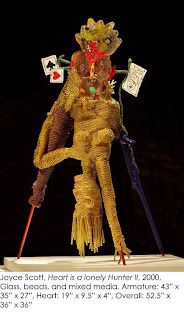
Joyce J. Scott The Heart is a Lonely Hunter II (2008) glass beads and mixed media, 49.5″ x 36″ x 36″
Joyce Scott is an artist who’s always expanded the forms she employs. You could say she makes jewelry, but that’s not really a sufficient description of a sculptural and narrative necklace called Peeping II: a bikini-clad woman swimming across the wearer’s collarbones and a man’s head peering at her over the wearer’s left shoulder. Did I mention that it’s made of glass beads? These are Scott’s primary medium for her objects; she’s also a performance artist and she’s certainly the only artist I know who can create anatomically correct nudes out of beads and invest them with powerful statements about identity, sexual relationships, history and race. The fluidity of her practice in terms of media has probably created problems for museums, who like to know in which department something fits.
Her first solo exhibition in Philadelphia is at Snyderman-Works through Nov. 15, and it includes jewelry, small and large free-standing sculpture and several wall pieces (that’s all I can think to call them – they are neither reliefs nor hangings); all are made with beads and assorted other materials. It also includes Scott’s first prints, made during a residence at the University of Tampa (FL), including a series involving an erotic dance of death rather like Holbein’s young couple shadowed by a skeleton. My favorite is a small wall piece, Tracy: a woman’s head tied by bloodlines to numerous ancestors, some as depicted by beaded figures and others by 19th century photographs. Scott’s work combines introspection and humor, desire and despair in a language all her own.


